Many years ago, on a friend’s recommendation, I visited the Asian Civilisations Museum in Singapore, located opposite the Singapore Cricket Club. I have been wanting to visit again and got that opportunity last week (8th May 2019) when I was on a vacation with family to the Island City. As a family of four, we enjoyed spending the 4 hours we spent there seeing the exhibits and learning so much about Asian cultures including Indian culture and religions. Unlike many of the museums, ACM has done a great job on the title card below every exhibit and posters on every hall, they explain clearly the item we are seeing, the history and significance. There are no restrictions on taking photographs, so I shot over two hundred pictures.
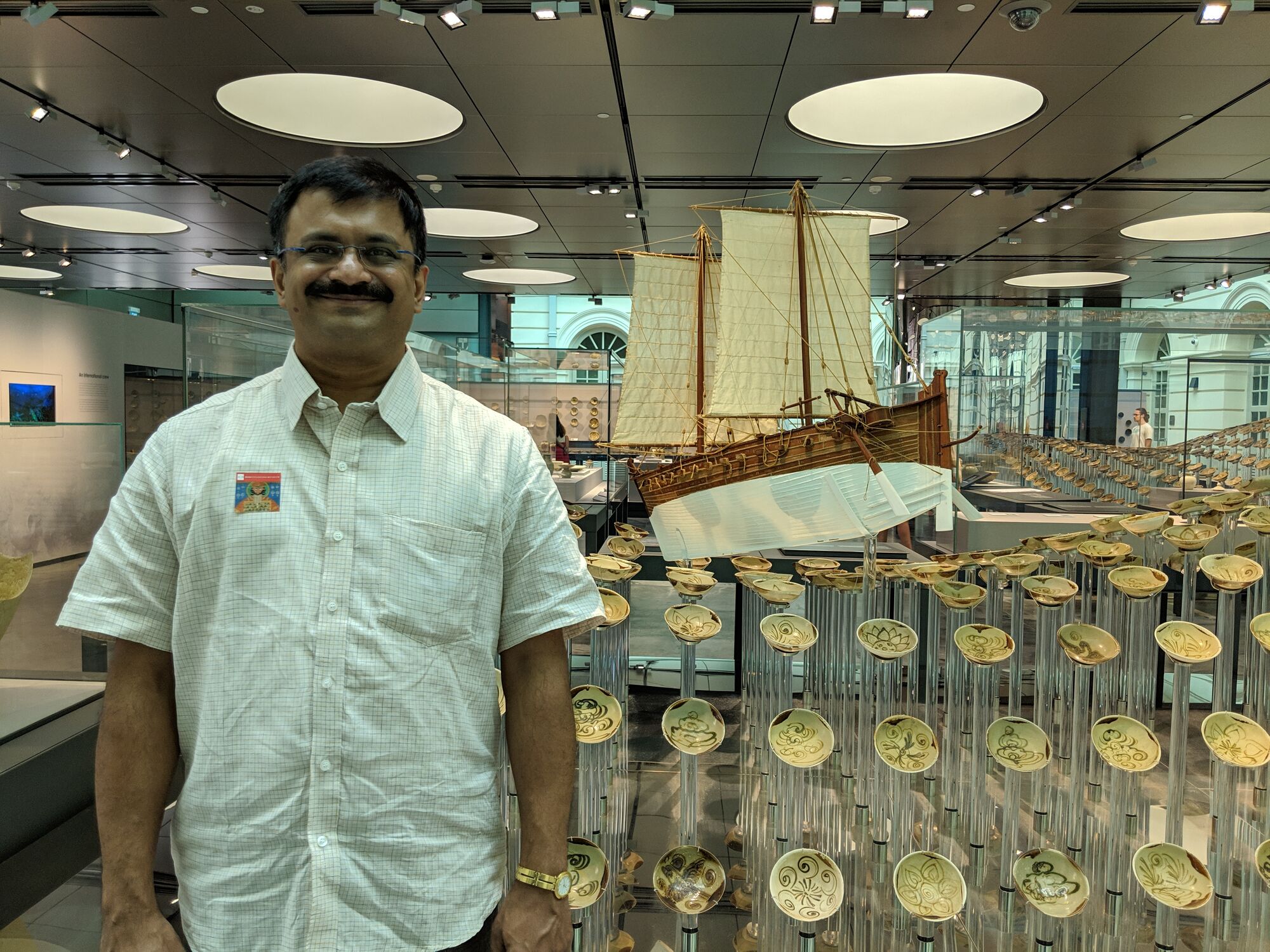
Venkatarangan in front of The Tang Shipwreck
[Three-Dimensional Virtual Display of Ceramics]

The Tang Shipwreck. The ceramics had been produced in China during the Tang dynasty (618-907).
Fishermen make a remarkable discovery: From September to October 1998 some 60,000 objects (Ceramic Bowls) were retrieved from a shipwreck near Java Sea. The ceramics had been produced in China during the Tang dynasty (618-907).
Thousands of ceramic bowls were tightly coiled inside storage jars. About 130 bowls were packed in each jar, cushioned by straw. This packing method and the silt of the seabed protected most of the ceramics against damage. The ship’s 70,000 ceramics weighed about 25 tons.
Several thousands of these objects are on display at ACM, Singapore and it was fascinating to see how they are.

Thousands of ceramic bowls were tightly coiled inside storage jars. About 130 bowls were packed in each jar, cushioned by straw.
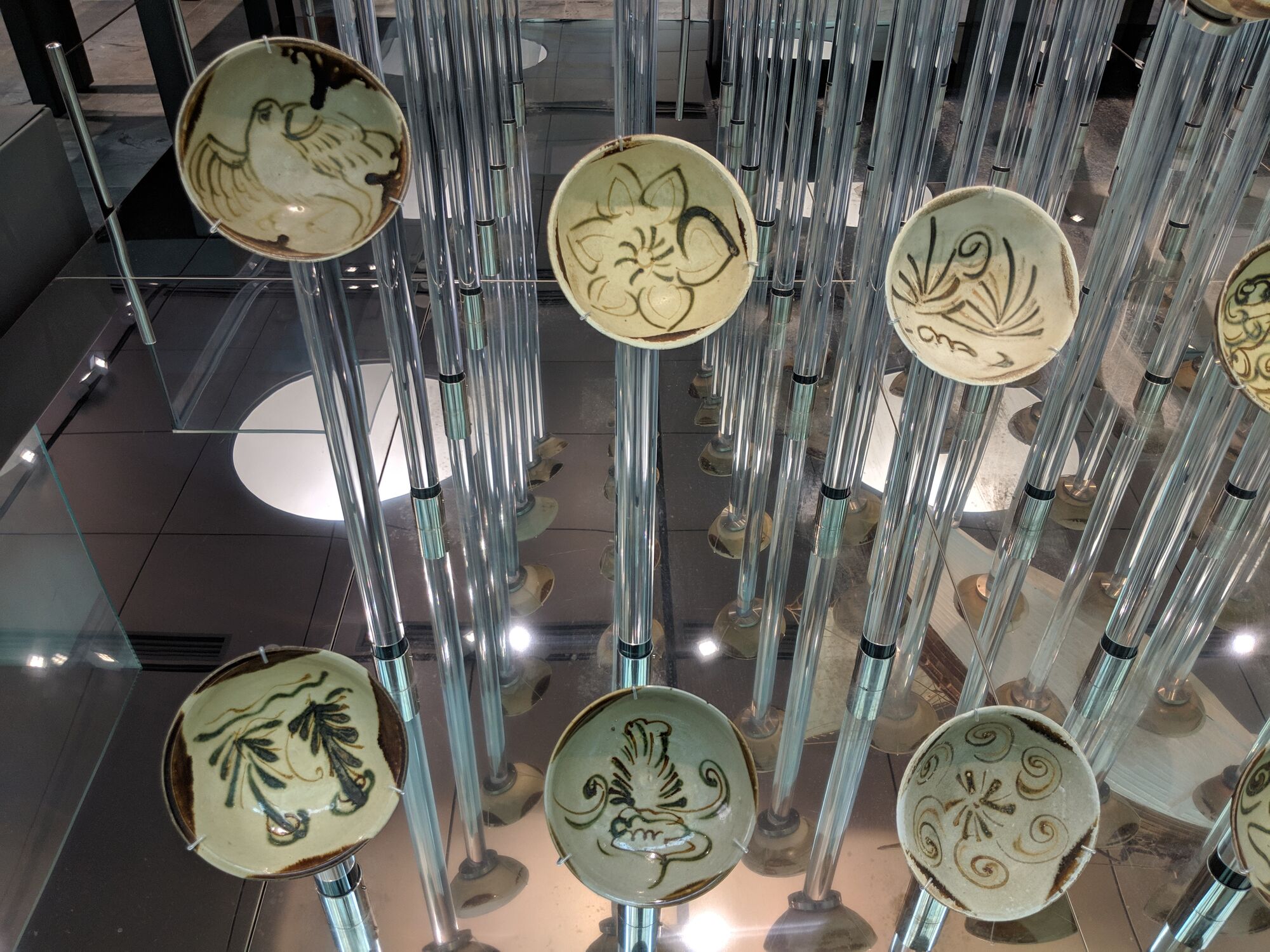
The ship’s 70,000 ceramics weighed about 25 tons.
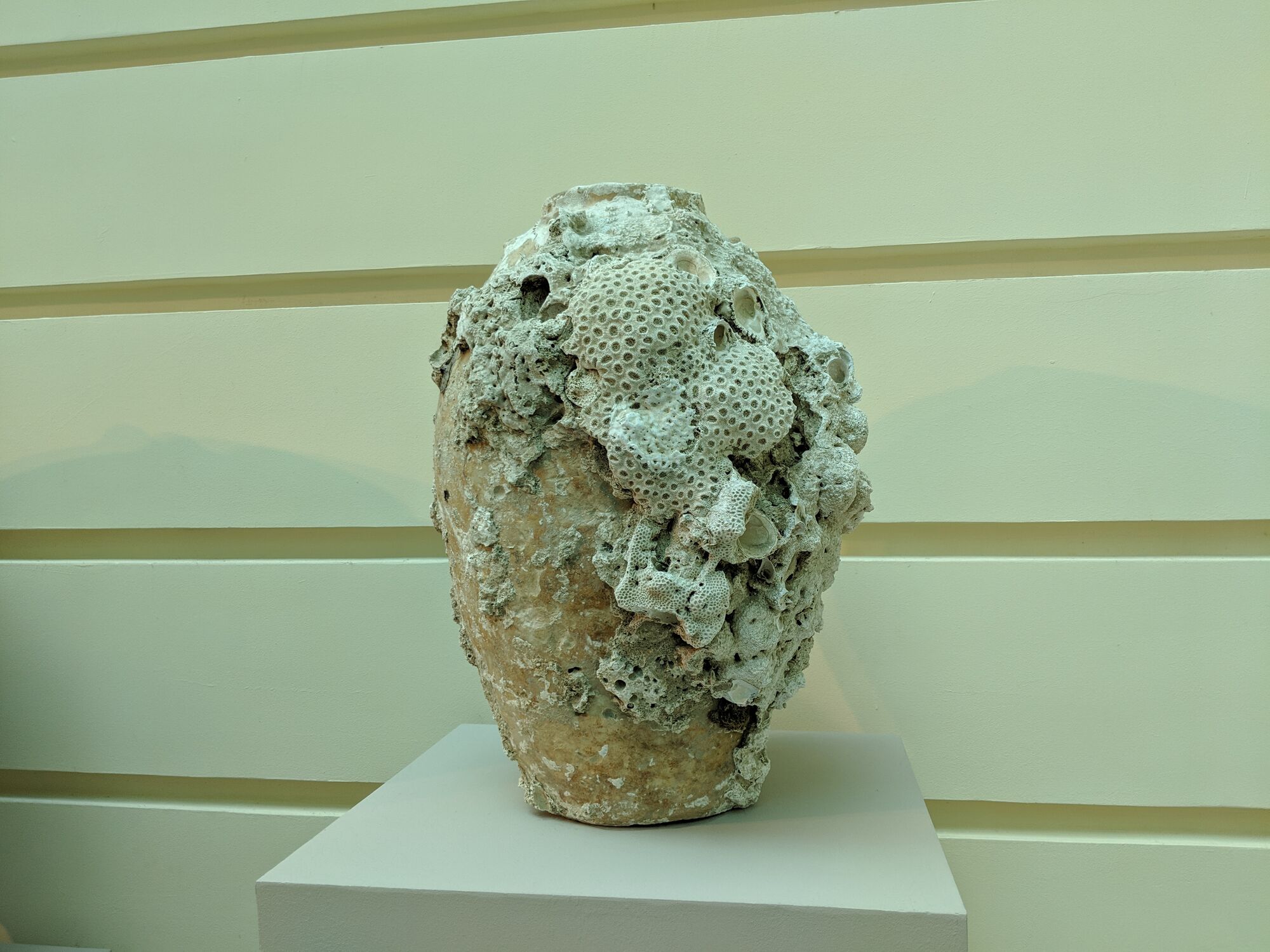
Jar from the Tang Shipwreck collection covered with corals

Attractive green colour ceramics from the Tang Shipwreck collection

Breathtaking designs on the ceramics from the Tang Shipwreck collection

Marvelously detailed figures. Model of a wedding procession, probably Batavia or Surabaya, mid-19th century Gum resin, paint pigments, metal wire.

Silver boxes and Gold items
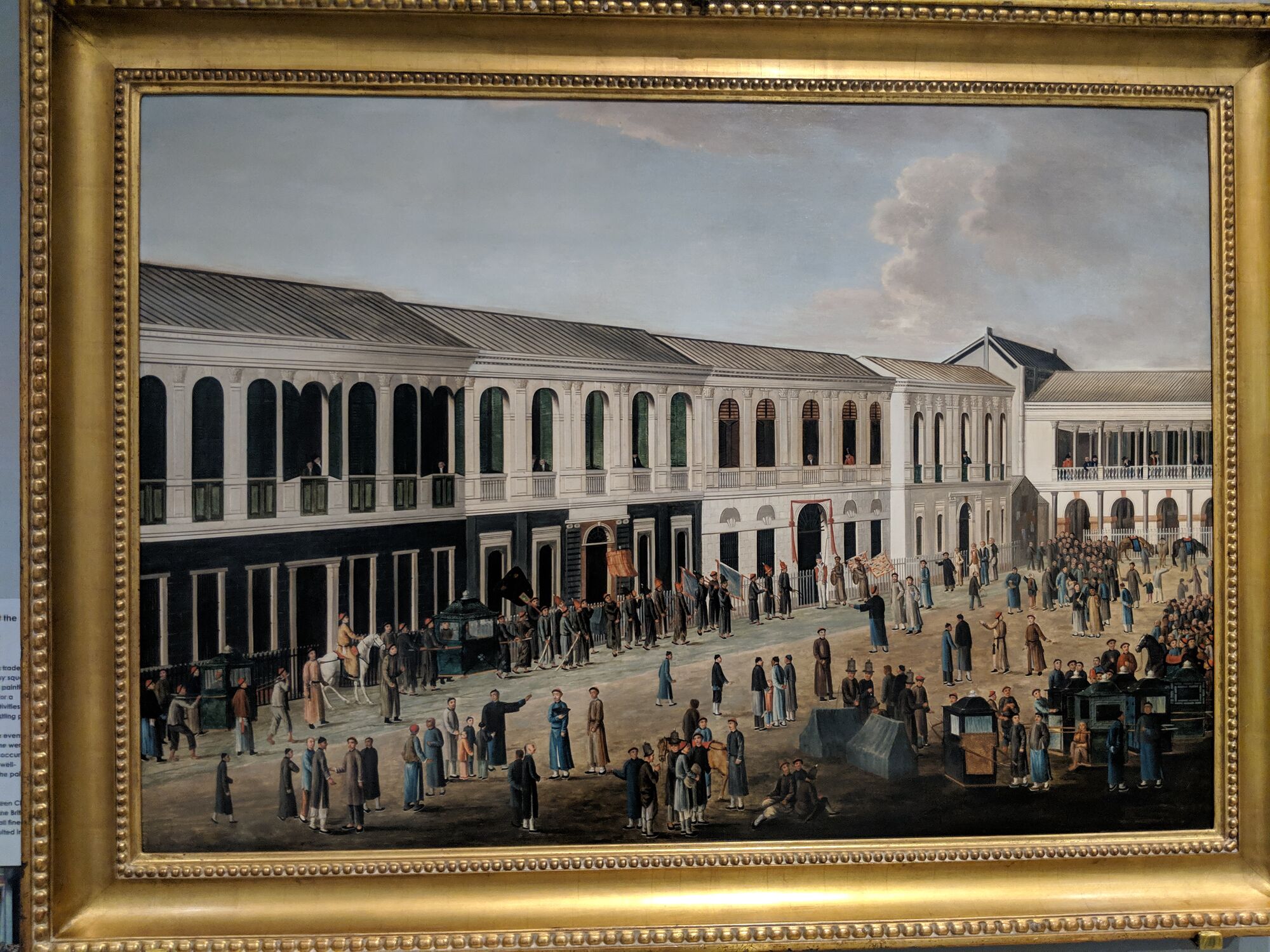
Officials assembling for a trial at the hongs of Canton, China, Guangzhou, around 1807 Oil on Canvas. It shows us some of the activities and dress of Chinese and foreigners in the bustling port.

Hong Kong Island from the harbour, late 1850s, Oil on Canvas, includes several landmarks, such as St John’s Cathedral (the white building with bell tower between the two mountains on the right) and Government House (1855) to the right and uphill.

View of the Shanghai Bund, China, 1849-51, one of the earliest views of the Shanghai Bund, the embankment along the Huangpu River where foreign traders set up shop.

Fan with views of Hong Kong, Guangzhou and Macau, 19th century. Chinese fans were highly sought after in the West.

Shaving Basin, Japan, Arita Kilns, early 1700s, Porcelain. Fits under the catch water and lather when shaving.

Hong Bowl, China, around 1785, Porcelain. This large punch bowl is decorated with the lively waterfront of Guangzhou, with sailing ships and Western-style buildings flying colourful flags.

Fish tank depicting the making of porcelain, China, around 1735. The stages of porcelain production – preparing clay, shaping and glazing bowls, firing in the kiln are shown around the sides of this large porcelain bowl.
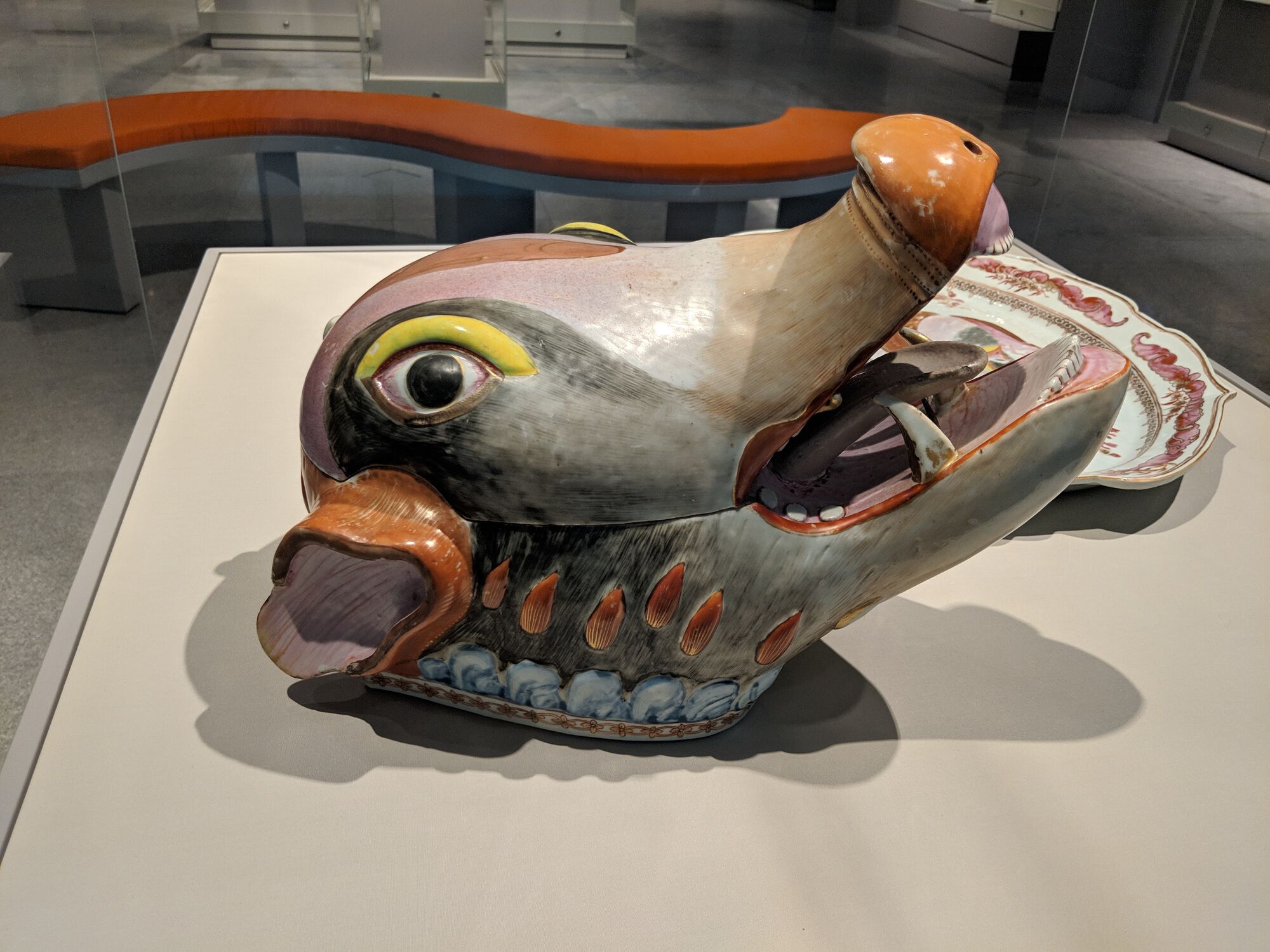
Boar’s-head tureen and underdish, China, 1760s, this brilliantly coloured boar’s head is actually a soup tureen.

1) Raffles chair, Java or Kolkata around 1810s. 2) Table, India, Vizagapatam, intricately inlaid with ivory. 3) Side chair, India, Coromandel Coast, late 17th century, Ebony wood. 4) Cotton Textiles – Hanging with the tree of life, 17th or 18th century.

Bureau Cabinet, India, 18th century, Ivory veneered rosewood, lacquer, metal.

Pachisi set, Game Pieces, India 18th or 19th century, Rock crystal, gemstones, ivory, satin silk

Marriage Box, Halmahera Island, first half of the 20th century, Palm leaf, rattan, cotton textiles, shells

Model of a temple, Myanmar, Yangon, 1914, The form of a Burmese temple.

Ancient and Rituals – Many societies have a reverence for ancestors.

The Scholar’s studio, 17th to 18th century, An elite scholar of the Ming or Qing dynasty would design a studio where he could study, meditate, calligraphy and painting.

Bureau Shrine, China, 1730s. Ivory sculpture of Christ on the Cross: India, Goa, late 17th century.

Cosmic form of Quan Am, this multi-armed figure represents Quan Am (Bodhisattva Avalokiteshvara’s name in Vietnam) with 1000 hands and 1000 eyes.

Guangong, China, Shanxi Province, Ming Dynasty (1368-1644). One of the most popular deities in Buddhist and Daoist Pantheons.

Ganesha, India, Karnataka, 12th century (Hoysala Empire). This four-armed Ganesha uses his trunk to tuck into a bowl of sweetmeats.

Mudras – The Meanings of the Buddha’s hand gestures
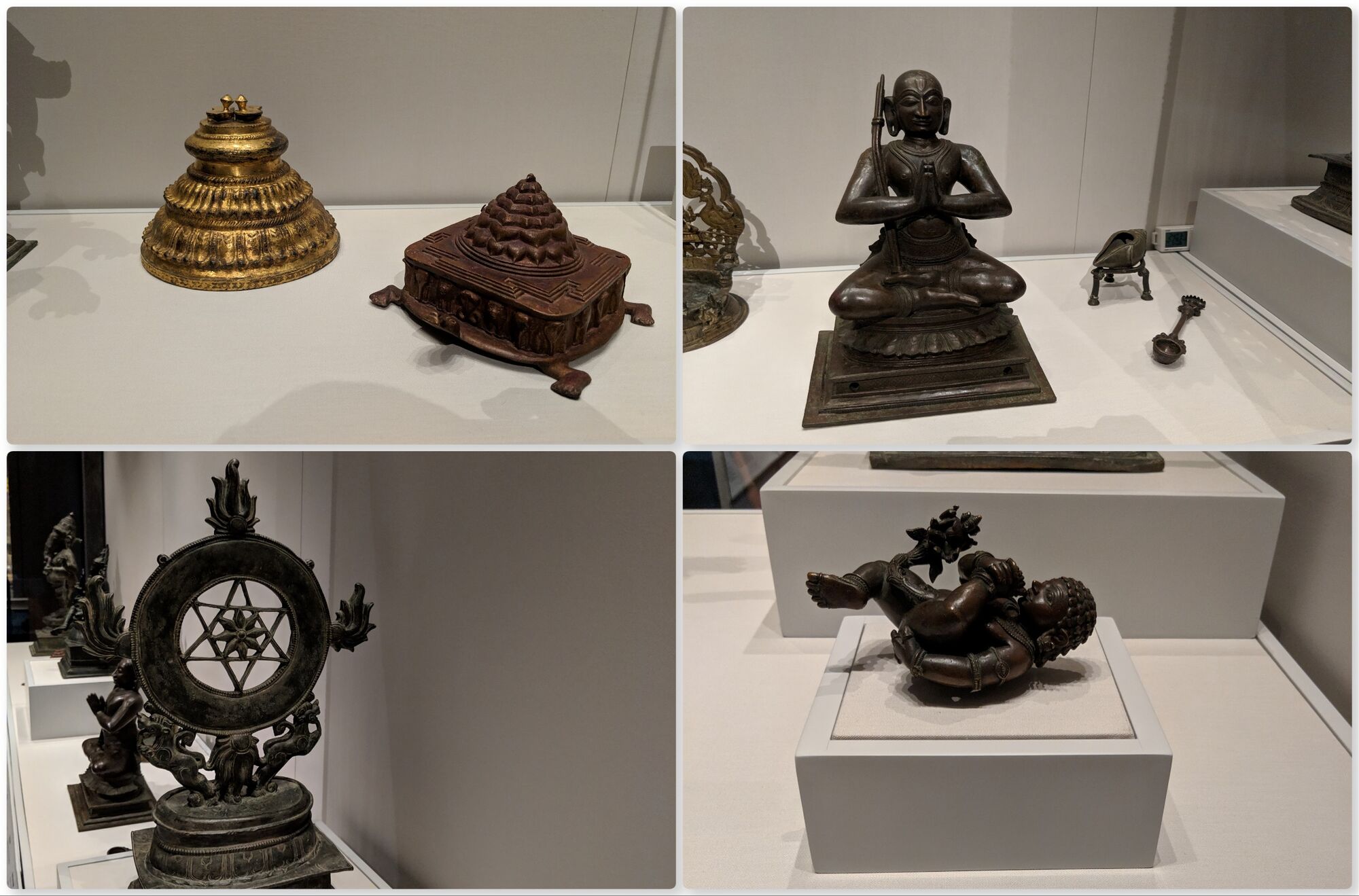
1) Shatari (Tamil Nadu, 19th Century) is a ritual cap that has slippers of the Vaishnava Alvar saint Nammalvar on top. 2) Ramanuja (Tamil Nadu, 15th Century) is the central philosopher of the Shri Vaishnava cult. 3) Shri Chakra (Tamil Nadu, Thanjavur, 1700) is the discus weapon wielded by Vishnu. 4) Cosmic Narayana as the infant Krishna (Karnataka, 15th Century).

The cover of a linga, Nepal, dated 1636, Copper with gilding. The four heads emerging from the four directions each show a different aspect of Shiva.

The Chola and Vijaynagar dynasties (9th to 16th Century)
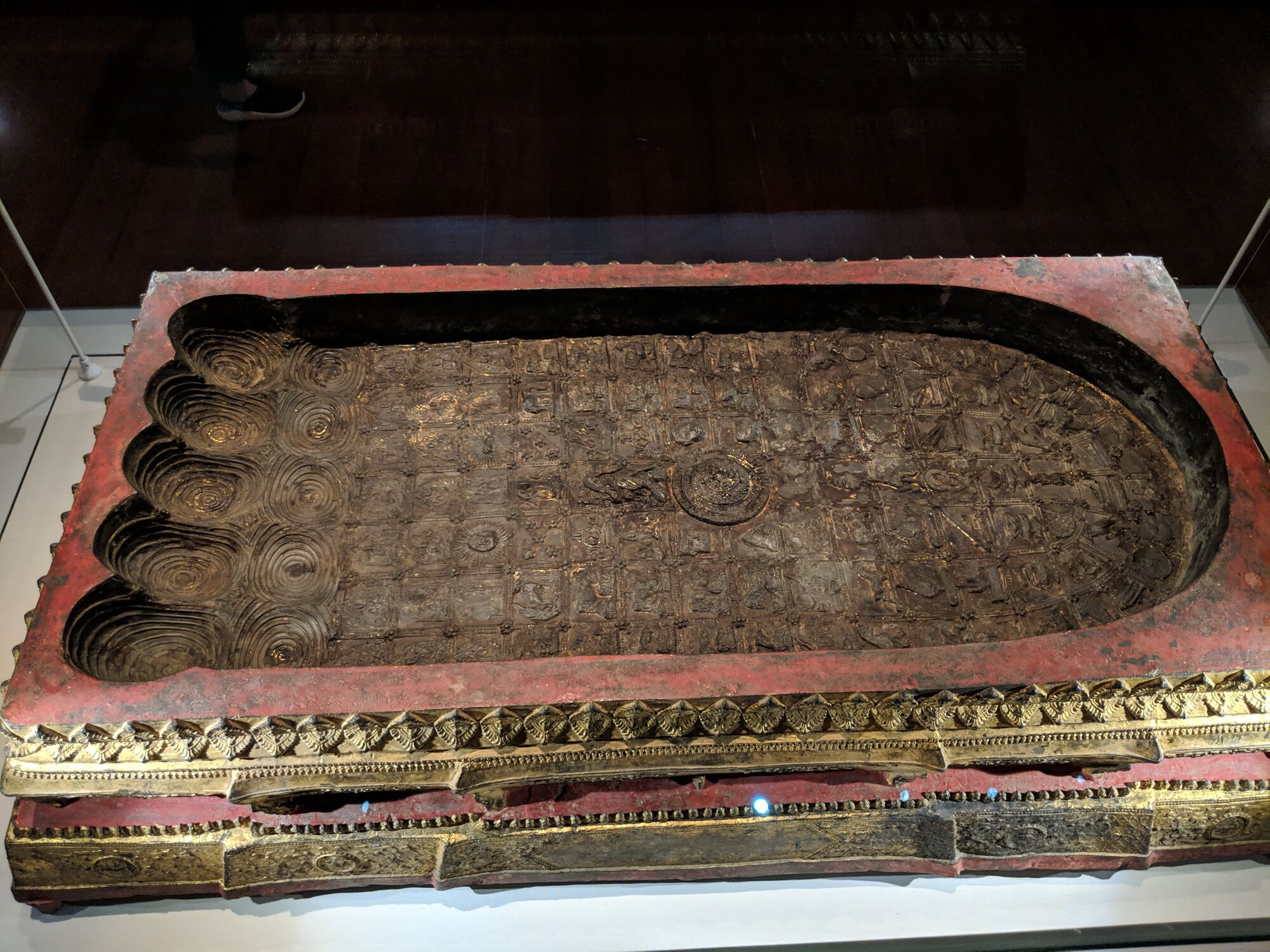
The Footprint of the Buddha, Thailand, 19th Century. Known as Buddhapada, this footprint of the Buddha has a Wheel of Law, symbolic of Buddha’s teachings.

Cosmic Man (lokapurusha), Rajasthan, 18th Century. This type of painting became very popular in Jain art. Jains believe the universe is infinite with no beginning or end, and not created by any deity. They conceive the order of the cosmos in relation to the human body, divided into 3 regions: upper, middle, and, lower.

Gateway bracket with four shalabhanjikas, Northwest India, 2nd century, Sandstone, this bracket depicts pairs of young women on either side of a tree. They are female nature spirits and fertility symbols.

Horse, China, Shaanxi Province, Tang Dynasty (618-907), Earthern ware.

Souvenir and Gift shop
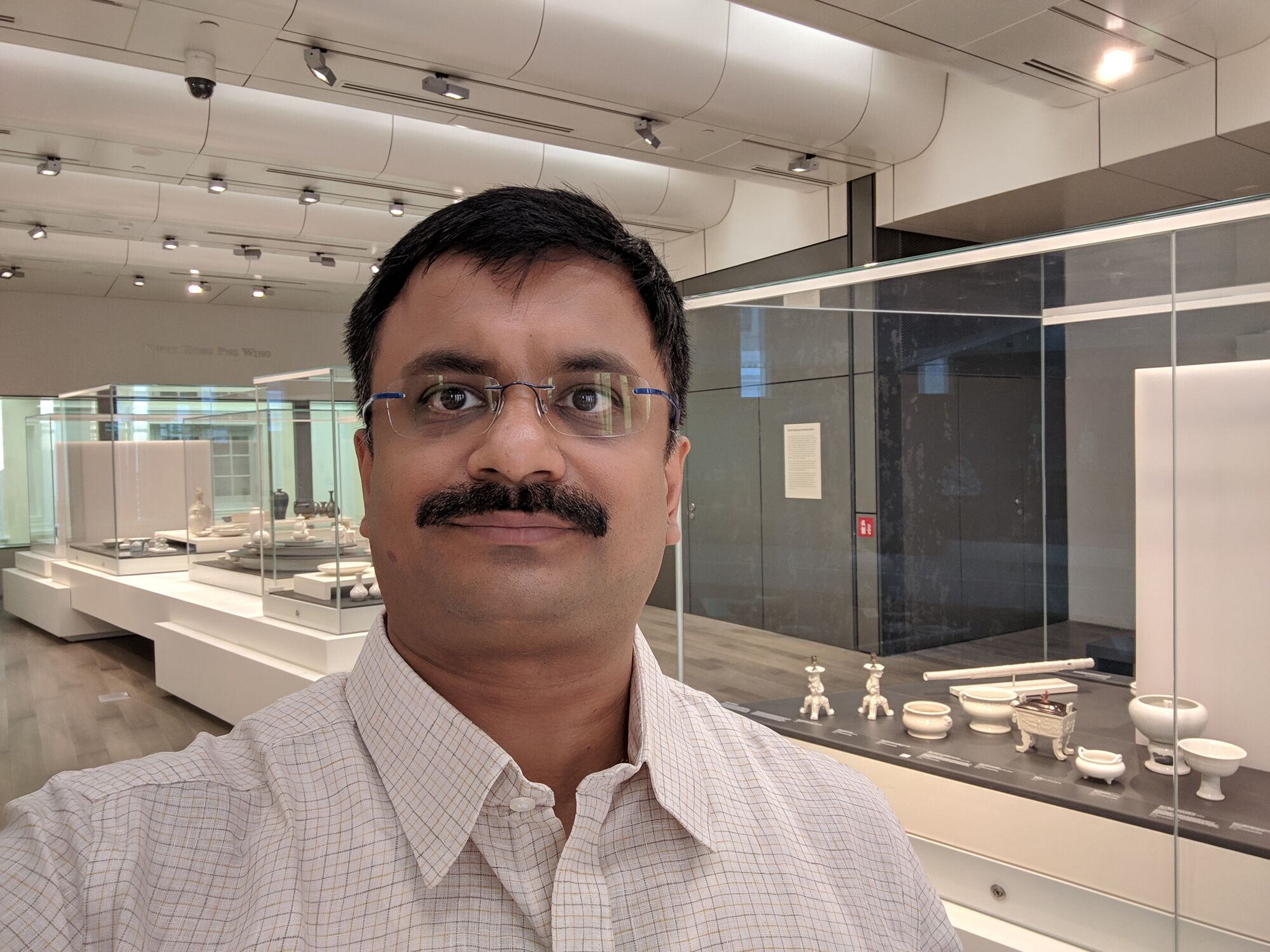
Venkatarangan in ACM
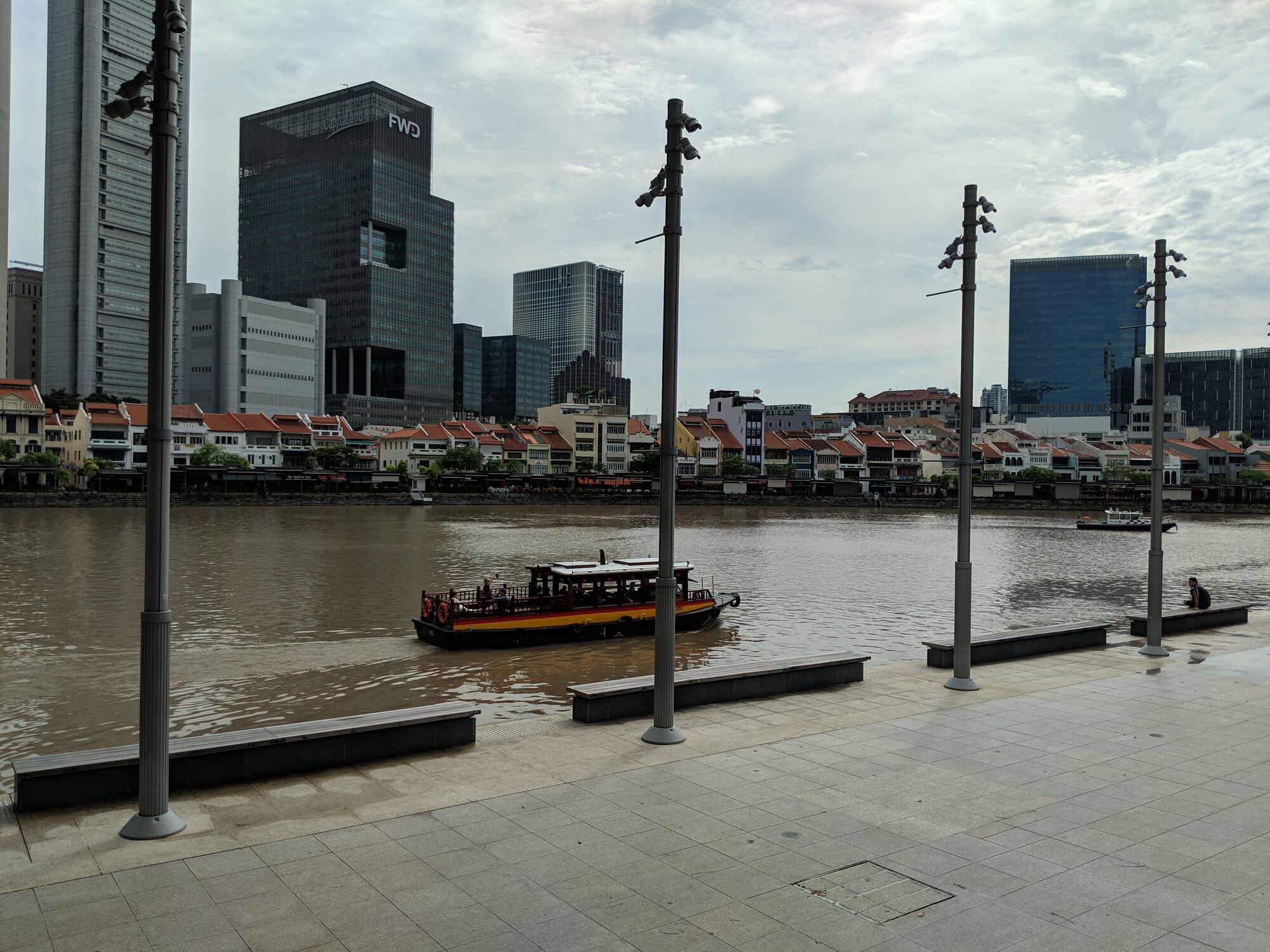
Singapore Riverfront


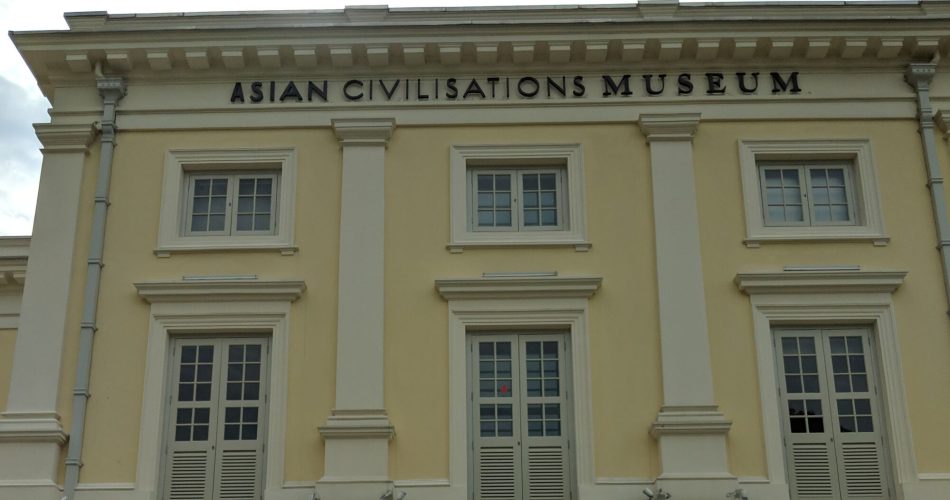
Comments